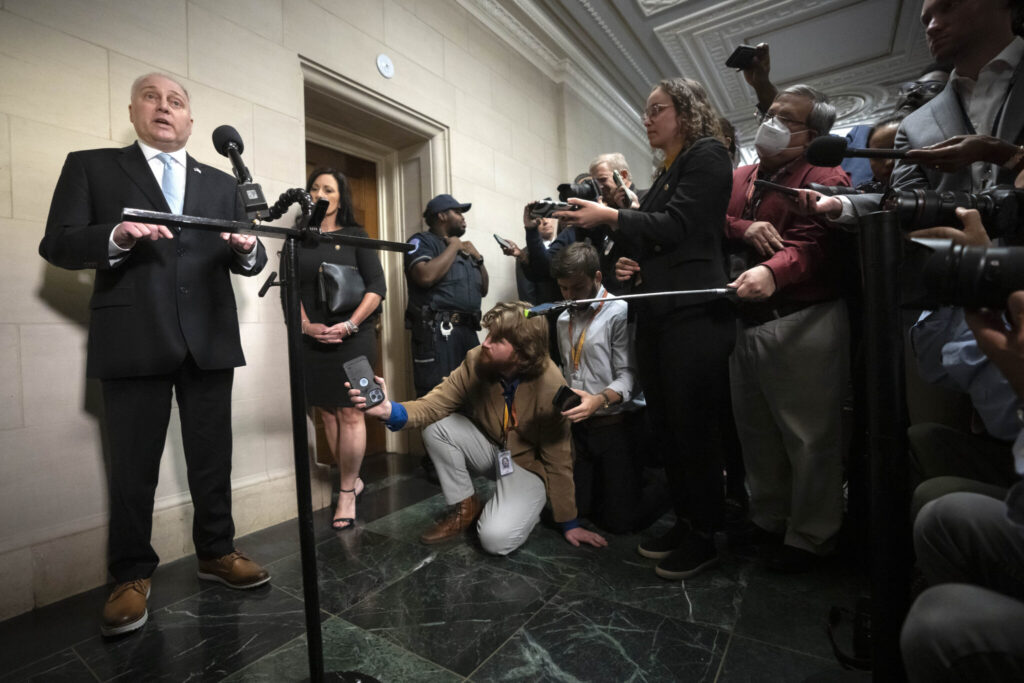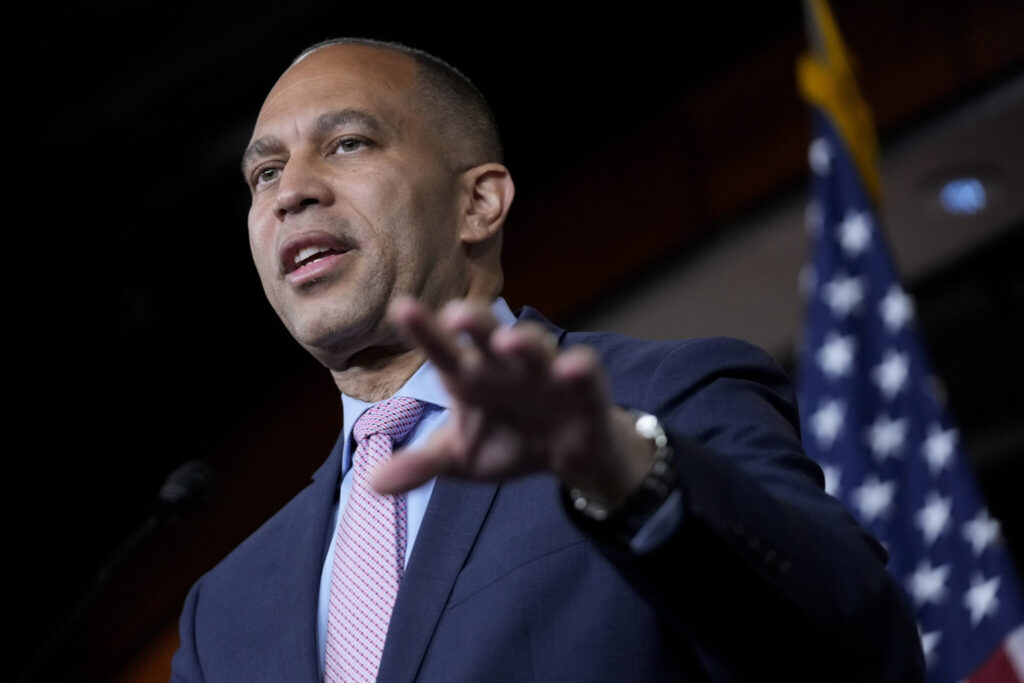Now that House Republicans have chosen Majority Leader Steve Scalise as their nominee for speaker, the race is on to secure the 217 votes he will need on the House floor to win the gavel and officially take the place of the ousted Kevin McCarthy. What you need to know about how the House elects a speaker, according to the Associated Press:
Steve Scalise faces an uncertain path to become Speaker
Newslooks- WASHINGTON (AP)
Now that House Republicans have chosen Majority Leader Steve Scalise as their nominee for speaker, the race is on to secure the 217 votes he will need on the House floor to win the gavel and officially take the place of the ousted Kevin McCarthy.
The GOP conference picked Scalise as their nominee on Wednesday in a secret ballot. Lawmakers exiting the room said Scalise won 113 votes, while Rep. Jim Jordan of Ohio, the House Judiciary Committee chairman, took 99. A handful of Republicans declined to vote for either.

With Scalise falling well short of 217 in the conference vote, the Louisiana congressman’s path to the speakership is uncertain. He was holding meetings to try and unite Republicans behind him, but some lawmakers said they were still supporting Jordan.
McCarthy, R-Calif., was suddenly and unexpectedly removed as speaker last week after just nine months on the job, leaving the House essentially leaderless with North Carolina Rep. Patrick McHenry in a caretaker role.

Scalise, who was McCarthy’s No. 2 in leadership, is a popular lawmaker who suffered major injuries after being shot during a baseball practice with colleagues in 2017. He recently announced that he has blood cancer, but has insisted that he feels good and is up to the top job.
What you need to know about how the House elects a speaker:
VOTING ONE BY ONE
The speaker is normally elected every two years, in January, when the House organizes for a new session. A new election can be held if the speaker dies, resigns or is removed from office. This is the first time an election is being held after the removal of speaker.
Once the House is in a quorum — meaning the minimum number of members are present to proceed — each party puts a name into nomination for speaker. Republicans will nominate Scalise. Democrats will nominate their current leader, New York Rep. Hakeem Jeffries, and vote for him.

House members are seated during the speakership vote. It’s one of the few times that lawmakers are all seated around the chamber.
Once the roll call for speaker begins, members are called on individually and shout out their choice. The candidate to become speaker needs a majority of the votes from House members who are present and voting. The House will vote as many times as necessary until someone reaches that threshold.
McCarthy narrowly won the speakership in January on the 15th round of balloting.
POTENTIAL COMPLICATIONS
Scalise faces several challenges as the floor vote looms. Nearly half the Republican conference supported Jordan. While some of them have said that they will now vote for Scalise, he will need the support of nearly every House Republican to win the speakership.
Additionally, lawmakers can vote for anyone they want to on the floor. While it has been the tradition for the speaker candidate to be a member of the House, it is not required. In January, a few Republican members even called out votes for former President Donald Trump, taking votes from McCarthy.

Historically, the magical number to become speaker has been 218 out of the 435 members of the House. But many previous speakers, including McCarthy and former Speaker Nancy Pelosi, D-Calif, have ascended to the dais with fewer votes than that because some members voted present instead of calling out a name. Every lawmaker voting “present” lowers the overall tally needed to reach a majority.
There are two vacancies in the 435-seat House right now, which means it would take 217 votes to win become speaker every lawmaker voted for a nominee.
PASSING OF THE GAVEL
Once a speaker candidate wins a majority of the vote, the clerk will announce a speaker has been elected.
A bipartisan committee, usually consisting of members from the home state of the chosen candidate, will then escort the speaker-elect to the chair on the dais where the oath of office is administered. The new speaker then traditionally gives a short speech.

Outgoing speakers have usually joined their successors at the speaker’s chair, where the gavel is passed as a nod to the peaceful transition of power. It’s unclear whether McCarthy will do that or whether the task will fall to McHenry.
GETTING RIGHT TO WORK
As soon as a speaker is sworn in, he or she is immediately in charge. A plaque with their name is hastily put above the door of the spacious speaker’s office next to the Rotunda and the person’s belongings are moved in.

McCarthy was photographed pointing at his own name above the door within hours of his election in January. On Wednesday, Capitol workers were moving furniture out of the speaker’s office.
Scalise has said that if he is elected, his first action will be to pass a bipartisan resolution making clear that the House stands with Israel in its war with Hamas. The speaker will also have to quickly figure out a way to unite Republicans and keep the government open before a mid-November deadline.







